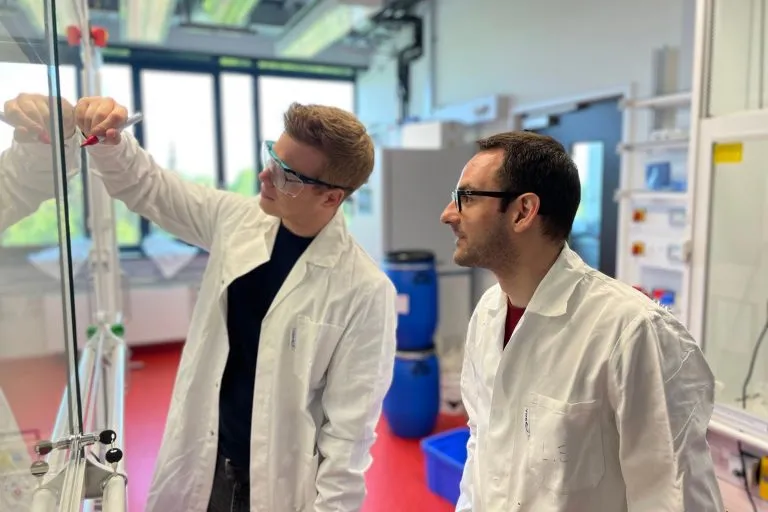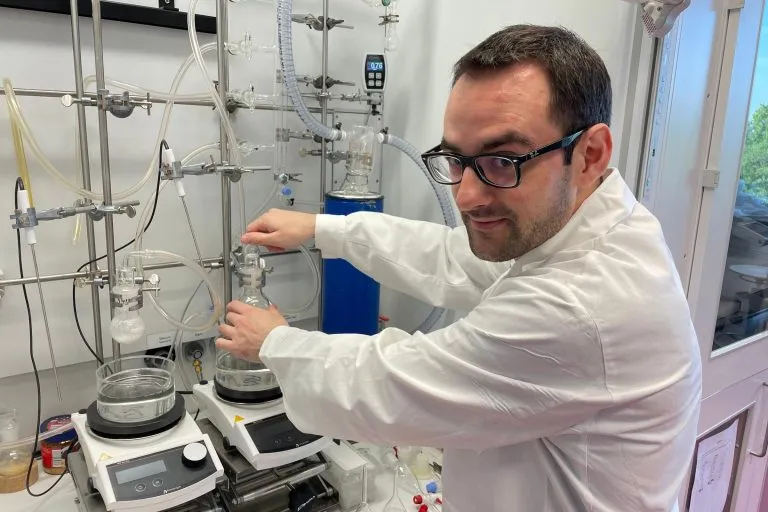
Investigating how life emerged on such a distant early Earth is one of the most fascinating challenges of science. Under what conditions must the basic components of more complex life be formed? One of the main answers is based on the so-called RNA world concept, which was proposed by Walter Gilbert, a pioneer in molecular biology, in 1986. According to this hypothesis, nucleotides are produced from "primitive soup" and short RNA molecules are produced by nucleotides. These so-called oligonucleotides have been able to encode a small amount of genetic information.
Since such single stranded RNA molecules can also be combined into double strands, however, this raises the theoretical prospect that these molecules can replicate themselves. In each case, only two nucleotides bind together, which means that one chain is the exact counterpart of the other chain, forming a template for the other chain.
In the process of evolution, this replication may be improved and produce more complex life at some time. Thomas Carell, a chemist at the University of Munich, said: "the idea of the RNA world has a great advantage. It outlines a path. Complex biological macromolecules, such as nucleic acids with optimized catalysis and information coding characteristics, can appear. According to our understanding today, genetic material is composed of double stranded DNA, which is a slightly modified and durable macromolecular form composed of nucleotides."

However, this hypothesis is not without problems. For example, RNS is a very fragile molecule, especially when it grows longer. In addition, it is unclear how the connection between RNA molecules and the protein world is generated. As we know, genetic material provides a blueprint for it. As described in a new paper published in the journal Nature, Carell's team has found a possible way to make this connection.
RNA itself is a complex macromolecule. In addition to the four classical bases a, C, G and u encoding genetic information, it also contains non classical bases, some of which have very different structures. These non information encoded nucleotides are very important for the operation of RNA molecules. Researchers now have more than 120 such modified RNA nucleosides, which nature has incorporated into RNA molecules. They are most likely remnants of the previous RNA world.
Carell's team now found that these non classical nucleosides are the key components, just like it, connecting the RNA world with the protein world. According to Carell, some of these molecular fossils can "decorate" themselves with single amino acids or even small amino acid chains (peptides) when they are located in RNA. When amino acids or peptides happen to exist simultaneously with RNA in a solution, this leads to a small chimeric RNA peptide structure. In such a structure, amino acids and peptides linked to RNA then even react with each other to form larger and more complex peptides. "In this way, we created RNA peptide particles that can encode genetic information in the laboratory, and even formed elongated peptides," Carell said.
Therefore, ancient fossil nucleosides are somewhat similar to the nucleus in RNA, forming a core on which long peptide chains can grow. On some strands of RNA, peptides even grow at several points. "That's a very surprising finding," Carell said. "There may never be a pure RNA world, but RNA and peptides coexist in a common molecule from the beginning. Therefore, we should expand the concept of RNA world to the concept of RNA peptide world. Peptides and RNA support each other in their evolution, and new ideas are put forward."
According to the new theory, a decisive factor in the beginning is the existence of RNA molecules, which can "decorate" themselves with amino acids and peptides, so as to connect them into larger peptide structures. "RNA has slowly evolved into an improved catalyst for amino acid ligation," Carell said. This relationship between RNA and peptides or proteins has been maintained to this day. The most important RNA catalyst is the ribosome, which today still connects amino acids to long peptide chains. As one of the most complex RNA machines, it is responsible for translating genetic information into functional proteins in each cell. "So the RNA peptide world solves the problem of chicken or egg first," Carell said. "This new idea creates a foundation on which the origin of life gradually becomes explicable."